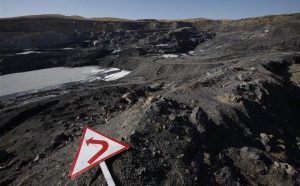The mainstream view in China’s energy sector is that the country cannot do without coal. Even the more optimistic observers think that the best that can be hoped for by 2050 is a three-way mix of coal, oil and gas, and non-fossil (renewables and nuclear) sources.
But new research from The World Wide Fund for Nature (WWF) and the Energy Transitions Research Institute (Entri) found that China could do without coal. If the Chinese government can muster the political courage not to build any more coal-fired power stations from 2020 and remove coal from the power-mix by 2040, then renewables will be able to ensure a “safe, stable, economic and clean” supply of power, without hampering economic development or increasing energy imports.
One of the policy scenarios studied hypothesised that by 2050 China would have transformed from an energy-intensive economy to a low-energy industrial and service economy, with the service sector’s percentage of the overall economy rising from 45% today to 75%. It also assumed that China would implement aggressive energy-efficiency measures, affecting residential air-conditioning, lighting and water-heating, as well as air-conditioning and lighting in the service sector, and ensuring the industry and the electricity-generating sector use the most advanced energy-efficiency technology.
It was further assumed that China would achieve its target of becoming a medium-developed nation, with per-person GDP of US$25,000 to US$30,000 and per-head electricity consumption rising appropriately from 3,100 kWh a year today to about 9,000 kWh (approximately the same level as Korea and Japan in 2010).
The model was then used to look at how to meet that demand, using currently mature renewable technology. Only conservative assumptions were made about technological advances, including efficiency improvements and decreasing technology costs. But the result was that for solar power, which will become cheaper faster, electricity generation costs will roughly halve in the coming two decades.
Based on these assumptions, the model predicts that renewable electricity will drop dramatically until 2035, then level out once it becomes cheaper than conventional sources. These assumptions and estimates are much more cautious and conservative than those used in much of the research into electricity supplies.
The results turn conventional wisdom on its head: by 2050 renewable energy could account for over 80% of all China’s electricity supply, with a 90% increase in carbon emission reductions over the baseline scenario, and the lowest costs over a 40-year period.
China has been the world’s biggest investor in renewable energy for four consecutive years, and today has more renewable-generating capacity than any other nation. The target for PV solar capacity in the 12th Five Year Plan has already been increased four times and on current trends is certain to surpass the 3,500 GW target in 2015. China is making good on its renewable electricity targets, and may yet set itself even higher goals. China should do everything possible to shift to renewable energy: because of the global trend towards a low-carbon economy, because of the realities of a worsening international trading environment and the need for adjustments to the industrial structure and because of China’s own energy and environmental demands.
It is time to ask if some “mainstream” views are now out of date. For decades, thinking on energy matters has been led by the idea that China is rich in coal, but poor in oil and gas. But a coal-based energy structure has ruined the environment and the long-term costs are incalculable. If things do not change in the future, our coal reserves will start to run out, environmental degradation will become irreversible, the need to import oil will leave us dogged by energy security concerns and social conflict and other new sources of instability may worsen.
The smogs that plague China show that our energy structure has not kept up with environmental needs. It is time for an energy revolution, founded on a basis of clean and renewable sources.



